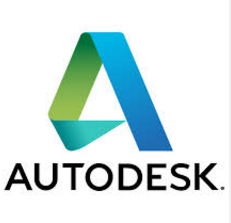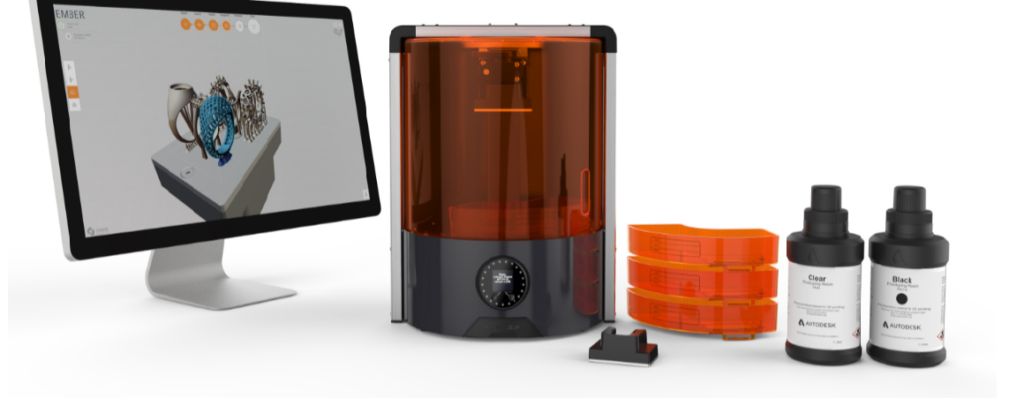Beat the DLP Printer! Autodesk Shows You How to Achieve Sub-Pixel Resolution, Manipulating Voxels with Luminosity
If you are a 3D printing enthusiast bent on making objects that are extremely accurate and with superior resolution, you’ve probably explored 3D printing processes such as Stereolithography (SL) and Digital Light Processing (DLP). While both using photopolymers, SL technology features a laser as its light source and DLP generally uses something more traditional like an arc lamp or projector.
Often thought to be a bit more affordable as it uses less resin, the technology of DLP printing has made quite a bit of progress. From hardware that prints with wax to DLP 3D printers designed for the jewelry and dental industries, models abound. But when Autodesk comes up with something new—such as the ability to receive sub-pixel resolution in DLP printing—that’s worth checking out in terms of your own equipment, as well as finding out what’s new with the Ember DLP 3D Printer, technology we’ve reported on most recently as it was used by the Smithsonian to replicate ancient Chinese statues.
Steve Kranz from Autodesk recently made a video tutorial to show us all how to achieve sub-pixel resolution in grayscale images, essentially allowing you to anti-alias your DLP printer, as you dabble in the fine art of manipulating pixels. This technique allows you to make the most of your images—without purchasing or enhancing hardware. This is easy enough that most should be able to tweak their DLP printers, and you may see this as a standard option soon.
Starting with the voxel, Kranz reminds us therein lies the foundation of 3D printing:
“The resolution of the printer is defined by the pixel size of the projected image and the layer thickness of the vertical direction. So a print of a 3D model is an approximation of many, many tiny cubic voxels. In a single layer, the location of voxels is set by the projected image.”
 Thus, in 3D printing if a voxel is white, the printer’s projector cures and solidifies the print; if the voxel is black, the projector does nothing and the resin stays put. No print is made.
Thus, in 3D printing if a voxel is white, the printer’s projector cures and solidifies the print; if the voxel is black, the projector does nothing and the resin stays put. No print is made.
“So far, we’ve been assuming that our images are composed of either purely black or purely white pixels,” says Kranz. “But what happens with a gray pixel? Would it print half a voxel? If so, which half?”
And so, the conversation grows more interesting as we continue to consider pixels and voxels, the indivisible atoms of DLP printing. Richard Green, part of the Ember team, performed an experiment, ‘How a Voxel Grows,’ to delve further into this realm of blocks, colors, and what the DLP printer will do when pushed a bit further. He made a solid row of pixels, followed by a solid row of voxels, in different shades from dark gray to bright white. The result was that dark gray pixels, predictably, do not print.
“At a certain point, a hemispheric bump forms and is attached to the previous layer,” states Kranz. “As the pixels get brighter, the voxels grow wider and slightly taller.”
What this means in the end is that quite simply, the size of a voxel can be controlled by ‘varying luminosity.’
“This allows us to do some really cool tricks,” says Kranz.
In using grayscale and more complex voxel setups, you’ll find that you can create more resolution than the rules should allow, in essence. Kranz is teaching you how to beat the 3D printer and achieve further quality. For those creating vertical slopes, this is especially helpful, allow you to add a precise draft angle—simply by adding a 50 micron wide pixel.
This also works for creating more subtle slopes generally seen in the typical stairstep pattern; in using grayscale you get finer resolution and a flatter slope. The same process also works with shallow, horizontal slopes.
“These grayscale tricks don’t magically allow you to print sub-pixel features,” he says, “but they do allow you to reduce the layer lines and artifacts you see in some other 3D prints.”
If you’re interested in finding out more about this project, see the video below, check out the Reddit page for other details, and see the Instructable from Richard Green, which even shows you how to make a movie of a voxel’s growth. Are you trying to get higher resolution from a DLP 3D Printer? Discuss further over in the Sub-Pixel Resolution from DLP 3D Printer forum over at 3DPB.com.
[Source: Reddit; Hackaday / Images: screenshots from Autodesk video]
Subscribe to Our Email Newsletter
Stay up-to-date on all the latest news from the 3D printing industry and receive information and offers from third party vendors.
You May Also Like
3D Printing Unpeeled: New Arkema Material for HP, Saddle and Macro MEMS
A new Arkema material for MJF is said to reduce costs per part by up to 25% and have an 85% reusability ratio. HP 3D HR PA 12 S has been...
3D Printing News Briefs, January 20, 2024: FDM, LPBF, Underwater 3D Printer, Racing, & More
We’re starting off with a process certification in today’s 3D Printing News Briefs, and then moving on to research about solute trapping, laser powder bed fusion, and then moving on...
3D Printing Webinar and Event Roundup: December 3, 2023
We’ve got plenty of events and webinars coming up for you this week! Quickparts is having a Manufacturing Roadshow, America Makes is holding a Member Town Hall, Stratafest makes two...
Formnext 2023 Day Three: Slam Dunk
I’m high—high on trade show. I’ve met numerous new faces and reconnected with old friends, creating an absolutely wonderful atmosphere. The excitement is palpable over several emerging developments. The high...



































